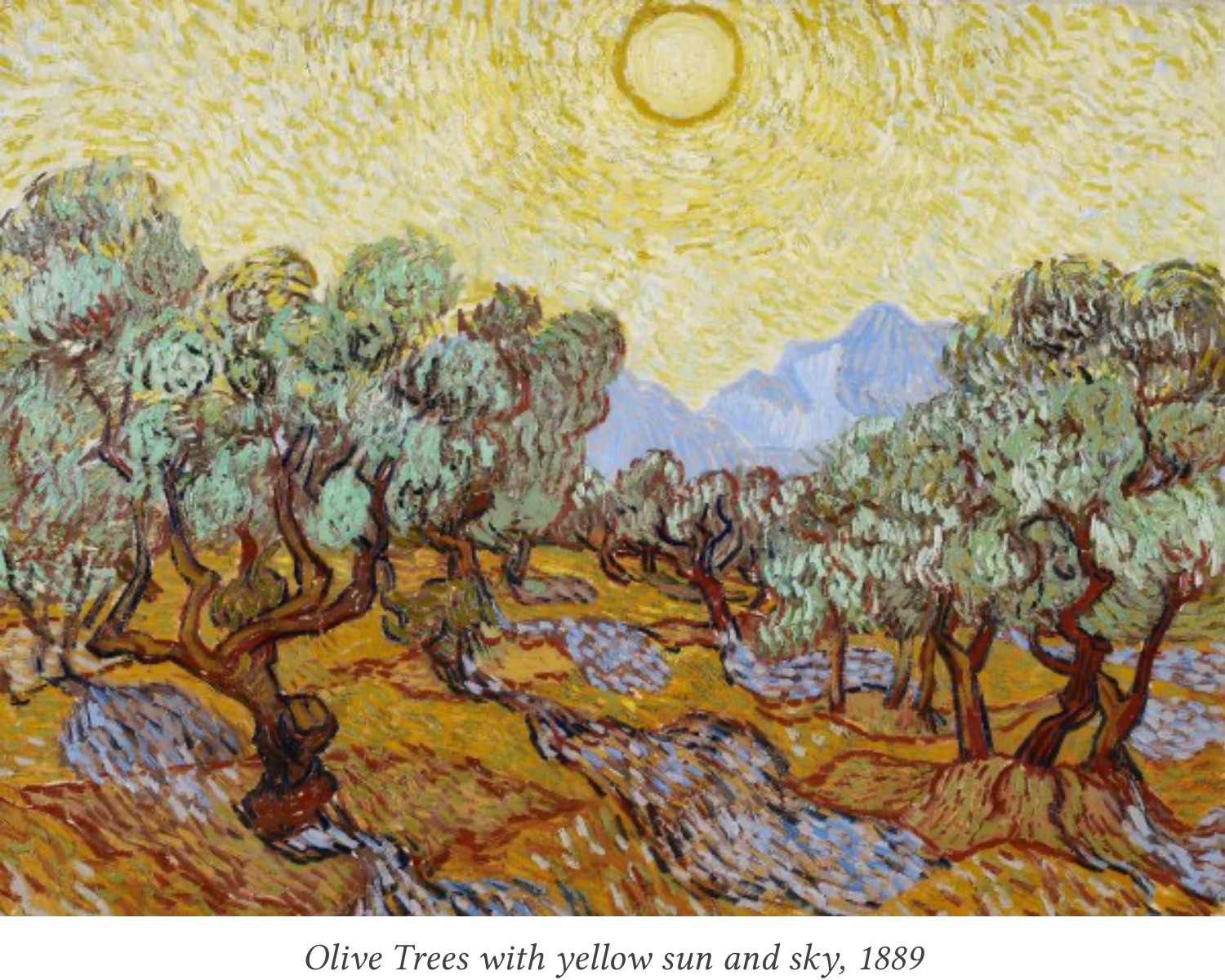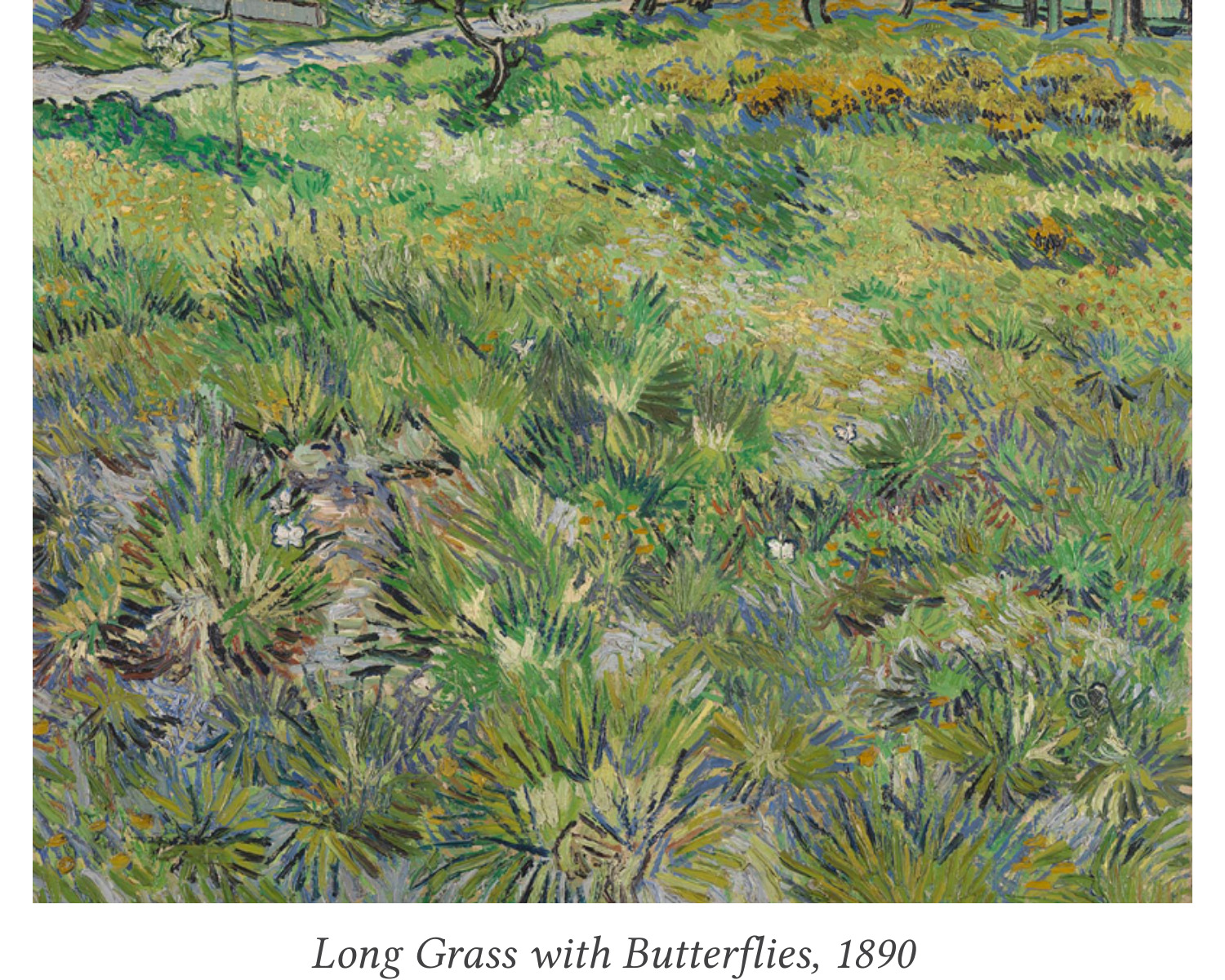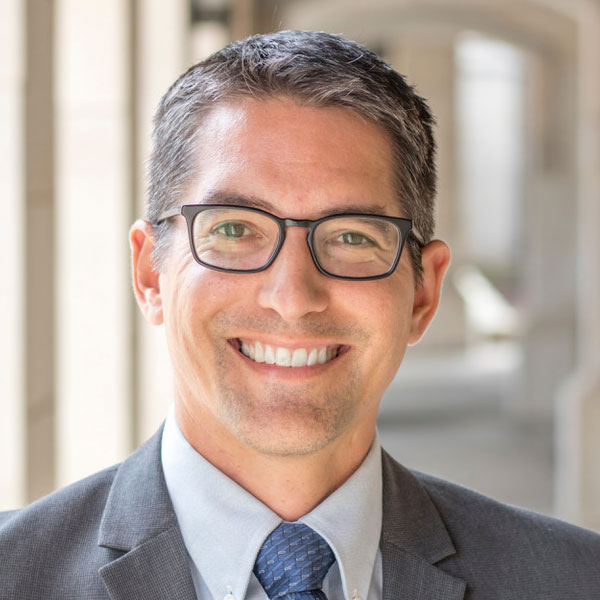Let Creation Speak

A Theology of Resonance and the Ecological Art of Vincent van Gogh
Dr. Wes Vander Lugt
I remember the first time I was drawn from across the room to encounter a painting by Vincent van Gogh (1853-1890). I was on an elementary school trip to the Minneapolis Institute of Art, and the painting was one of van Gogh’s many renderings of olive trees (seen above) during his time at the Saint-Paul psychiatric hospital. There was a vibrancy, aliveness, and urgency to the painting that drew me in and kept me transfixed. It was an experience that I’ve come to name as a moment of resonance, a vibrant encounter in which I sensed the artwork speaking to me and calling for a response, which in this case was a different way of interacting with creation.
What is resonance?
Resonance is first an acoustic phenomenon where one body creates vibrations and “resonates with” another body (think of one tuning fork vibrating and resonating with another). Applied to other areas of life, resonance is a vibrant encounter between two bodies or subjects with their own unique energy and agency. You can experience resonance with anyone or anything if there is what sociologist Harmut Rosa calls “an energetically charged form of contact.”[1] In other words, whatever the relationship, resonance is a matter of genuine encounter, responsiveness, and a willingness to be affected.
Possibilities of resonance are everywhere because the God who created and sustains the world exists in eternal resonant relationship as Father, Son, and Spirit. If creation is the overflow of God’s triune vibrancy, then resonance is the nature and purpose of all reality and relationships, including our relationship with creation. In a world riddled with alienation, resonance names our longing for vibrant wholeness, energized relationships, and fullness of life.
Resonance with van Gogh’s Art and Creation
 Van Gogh experienced a resonant relationship with creation, and he attempted—like in Long Grass with Butterflies—to express that through painting. He wrote in a letter to his brother: “all nature seems to speak … I do not understand why everyone does not see and feel it; nature or God does it for everyone who has eyes and ears and a heart to understand.[2] Elsewhere, van Gogh wrote of “wrestling with nature” to discover her secrets and perhaps to become her friend, and through his painting he invites us to do the same.[3] Resonating with an artwork is not always automatic, but it can emerge through sustained presence and attentive perception. In our busy and image-saturated lives, we need to learn how to stay present with artwork beyond any immediate reaction and despite natural preferences.
Van Gogh experienced a resonant relationship with creation, and he attempted—like in Long Grass with Butterflies—to express that through painting. He wrote in a letter to his brother: “all nature seems to speak … I do not understand why everyone does not see and feel it; nature or God does it for everyone who has eyes and ears and a heart to understand.[2] Elsewhere, van Gogh wrote of “wrestling with nature” to discover her secrets and perhaps to become her friend, and through his painting he invites us to do the same.[3] Resonating with an artwork is not always automatic, but it can emerge through sustained presence and attentive perception. In our busy and image-saturated lives, we need to learn how to stay present with artwork beyond any immediate reaction and despite natural preferences.
Learning to resonate with van Gogh’s ecological art, therefore, helps us experience creation like he did: as a chorus of animate characters. Creation is not merely the stage on which the central divine-human drama takes place; it includes a multitude of characters with their own stories, agencies, and voices. A failure to listen and respond to creation is a failure of love. At the root of ecological degradation lies a mute relationship, interacting with creation as an inanimate, silent object to dominate and develop for anthropocentric purposes.
Van Gogh’s ecological art invites us to pay attention and listen to creation as it speaks its diverse languages of praise, lament, gratitude, and confrontation. Through resonant encounters with van Gogh’s depictions of earth and nature, we can learn how to perceive creation attentively, not as separate from human existence but vitally entangled with our embodied, dependent, creaturely life. By God’s grace, we can learn as van Gogh did to wrestle with creation, receive her secrets, and become her friend.
[1] Hartmut Rosa, Resonance: A Sociology of our Relationship with the World, translated by James C. Wagner (Medford, MA: Polity Press, 2019), 137.
[2] Letter from Vincent van Gogh to Theo van Gogh, The Hague, 26-27 November, 1882.
[3] To Theo 12-15 Oct 1881; Letter p. 94; 26 Jan 1885; 15 Oct 1883.
 Dr. Wes Vander Lugt is Adjunct Professor of Theology and acting director of the Leighton Ford Initiative in Theology, the Arts, and Gospel Witness. His forthcoming book, Beauty Is Oxygen: Finding a Faith that Breathes (Eerdmans, 2024), explores the formative role of beauty in our journey of faith, hope, and love. This blog is a summary of a conference presentation at The National Gallery in London on The Art of Creation.
Dr. Wes Vander Lugt is Adjunct Professor of Theology and acting director of the Leighton Ford Initiative in Theology, the Arts, and Gospel Witness. His forthcoming book, Beauty Is Oxygen: Finding a Faith that Breathes (Eerdmans, 2024), explores the formative role of beauty in our journey of faith, hope, and love. This blog is a summary of a conference presentation at The National Gallery in London on The Art of Creation.